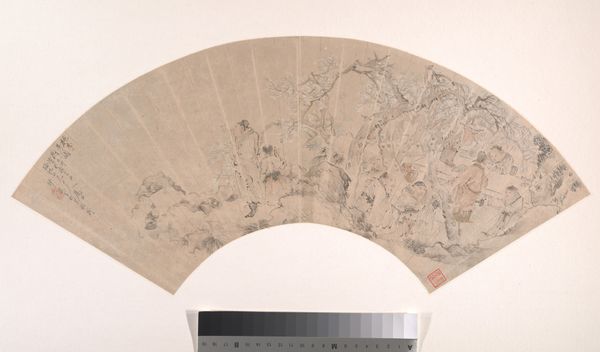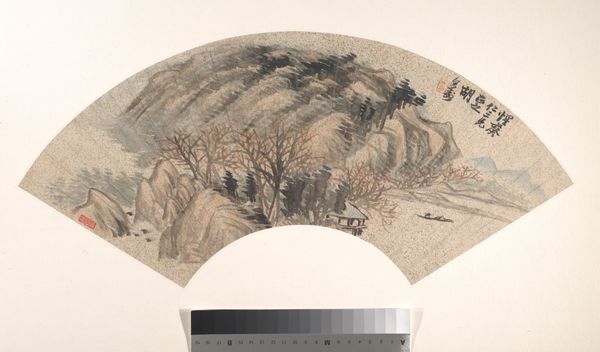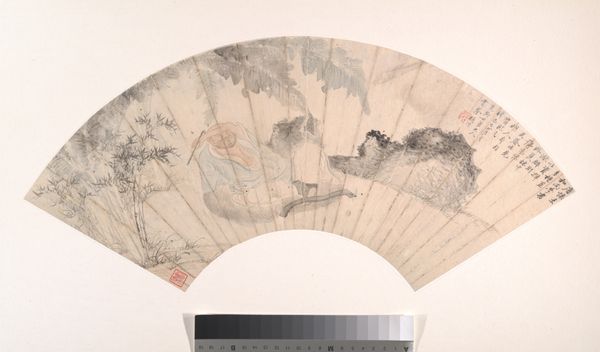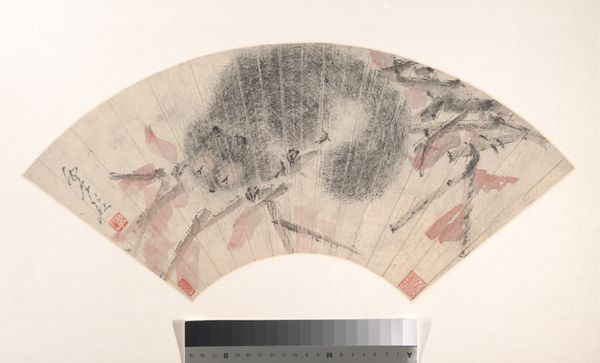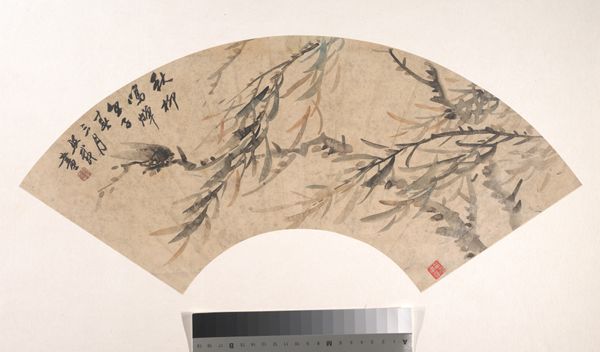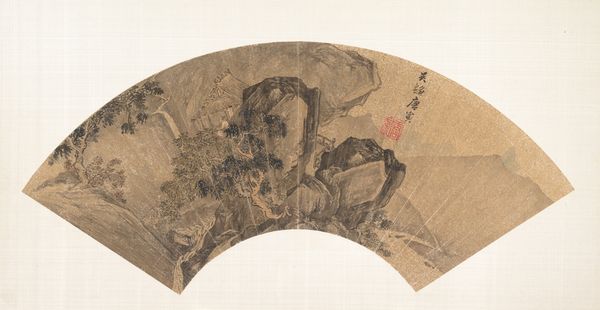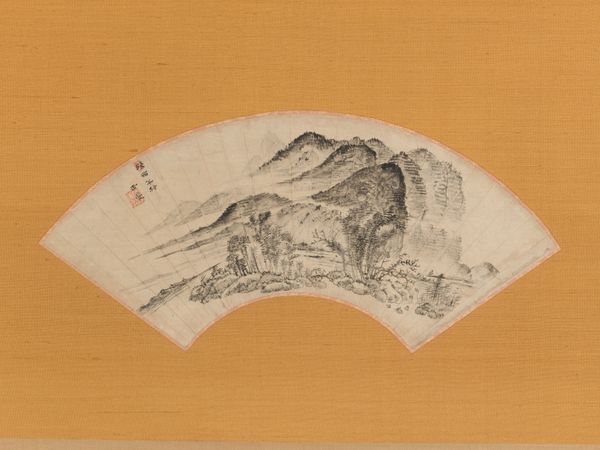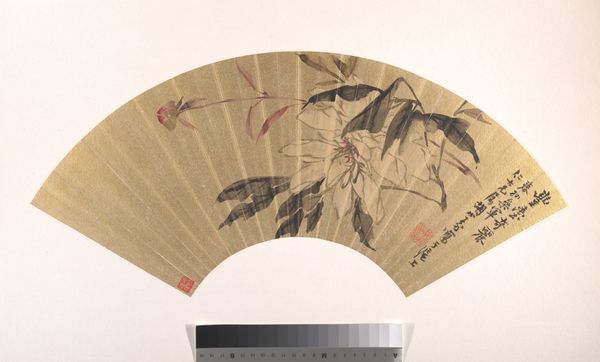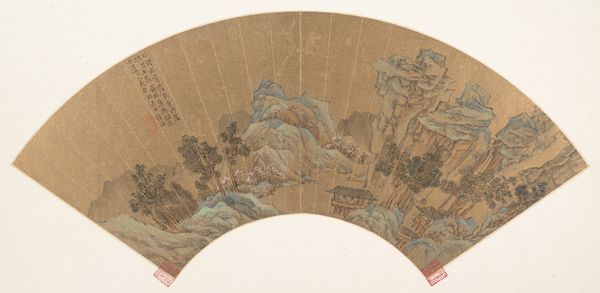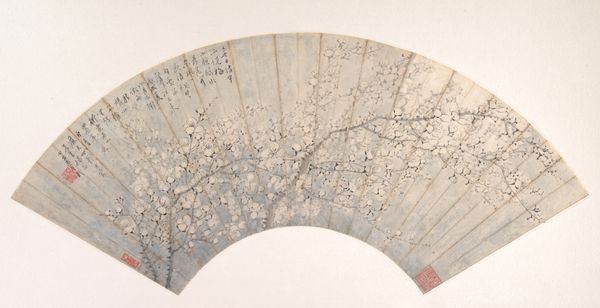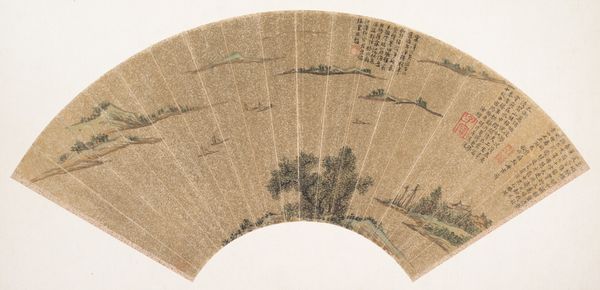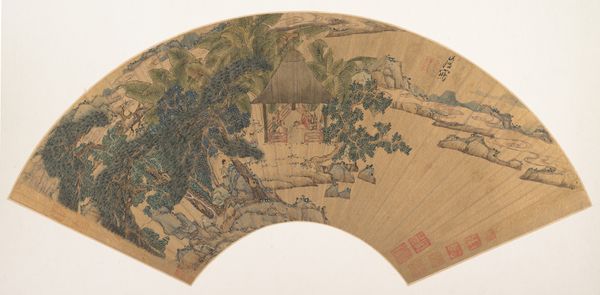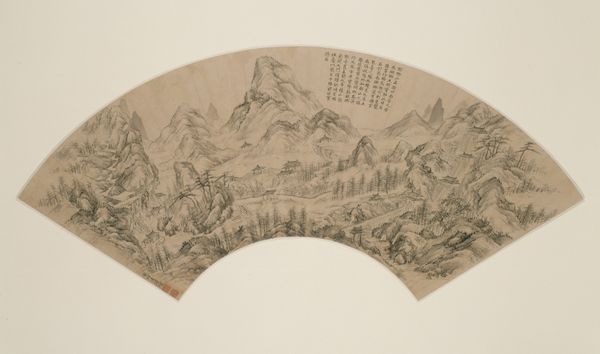
tempera, painting, watercolor, ink
#
tempera
#
painting
#
sculpture
#
asian-art
#
landscape
#
figuration
#
watercolor
#
ink
#
watercolor
Dimensions: 6 1/8 x 20 5/8 in. (15.6 x 52.4 cm)
Copyright: Public Domain
Curator: Let's consider this fan painting, simply titled "Landscape," attributed to Wang Tingru, dating from between 1804 and 1852. It’s ink and watercolor on, perhaps surprisingly, tempera. It resides here at The Met. Editor: Immediately striking is the overall muted tonality. It gives the impression of a dreamscape, the fine dotting producing a grainy, almost otherworldly effect. I would guess the primary function here is meditative. Curator: Indeed. Landscapes in Asian art, and certainly in painting of this period, are rarely just depictions of scenery. They act as mirrors for the soul, pathways to contemplate humanity's place within nature's grand design. Notice how the mountainous crags in the distance dominate. Mountains often represent steadfastness, refuge. Editor: And water, often included in landscapes, seems absent here save a trickle or stream along a rock face. The lack feels almost pointed; maybe this points us away from typical metaphors toward something like an existential aridity. The strokes are, to be frank, sparse. It's less about replicating a vista and more about conjuring one. The formal emphasis is surely on the negative space, allowing the form of the fan itself to participate as an active pictorial element. Curator: Very insightful. Remember too, the fan itself carries cultural weight. Its opening suggests expanded knowledge, revelation, unveiling. This vista, in my opinion, unveils itself over time. And I find this to be especially poignant on a handheld object. What hidden messages were discreetly displayed in social circumstances? Editor: A crucial point. And thinking of context brings an immediacy. This isn't a grand public declaration; it's an intimate statement. Perhaps that contributes to my original impression of meditative privacy. And yes, over time, the work definitely reveals new relationships and hierarchies within the brushwork itself, making new visual connections. Curator: Well, looking closely at the semiotic context really underscores what at first appeared simply an elegant object. I feel the history emanating from within it, the centuries of artistic engagement informing its understated imagery. Editor: And analyzing that restrained composition brings us face-to-face with the possibility of meaning generated as much from what’s been left unsaid and unseen as it has from overt symbolic statements.
Comments
No comments
Be the first to comment and join the conversation on the ultimate creative platform.
